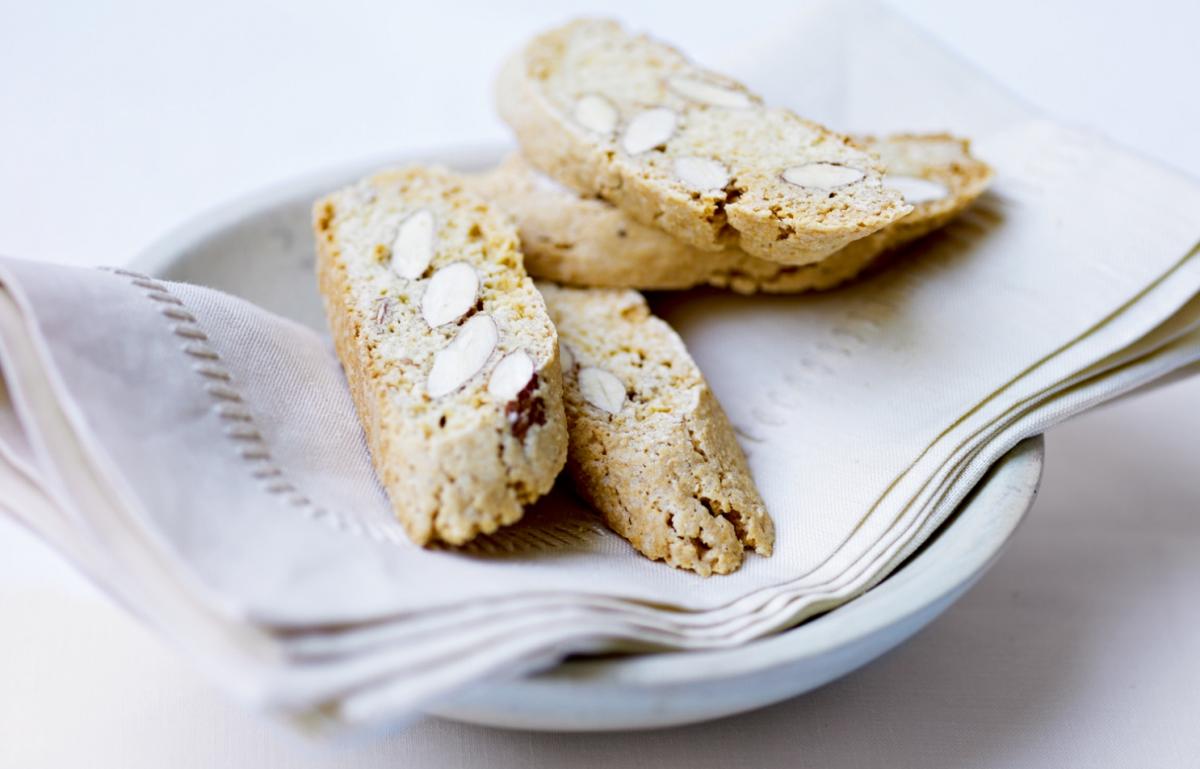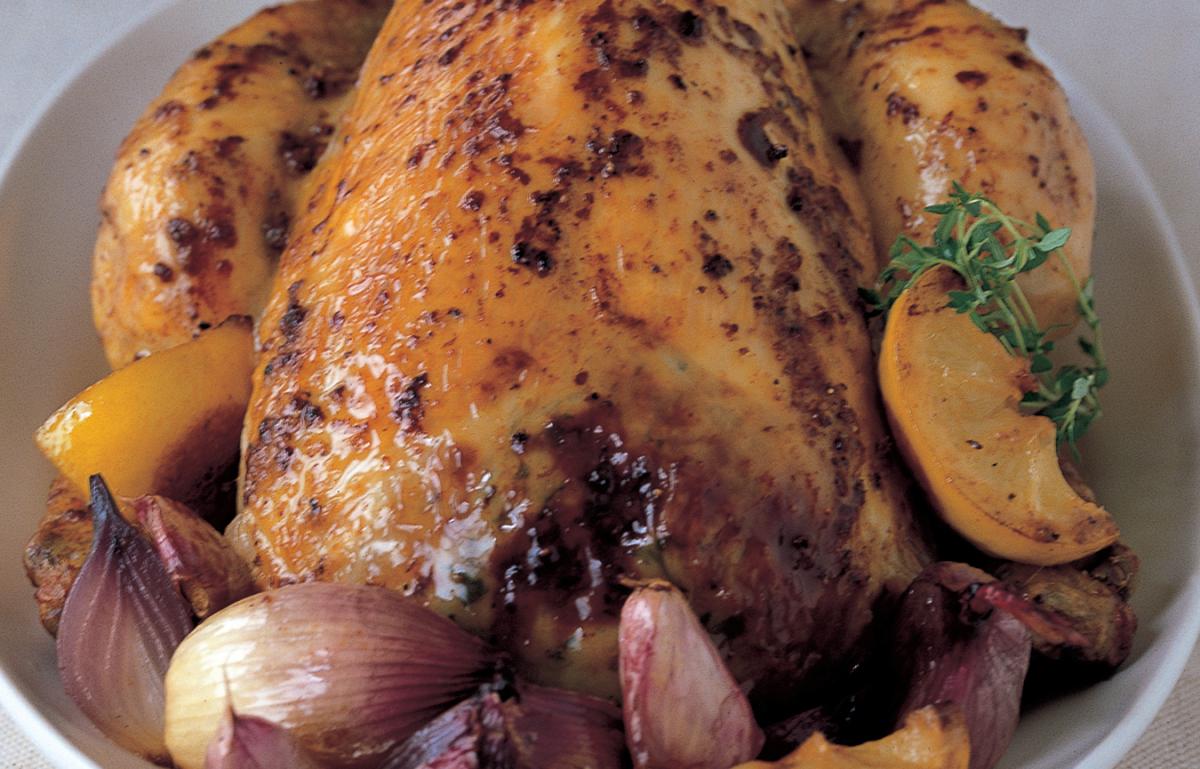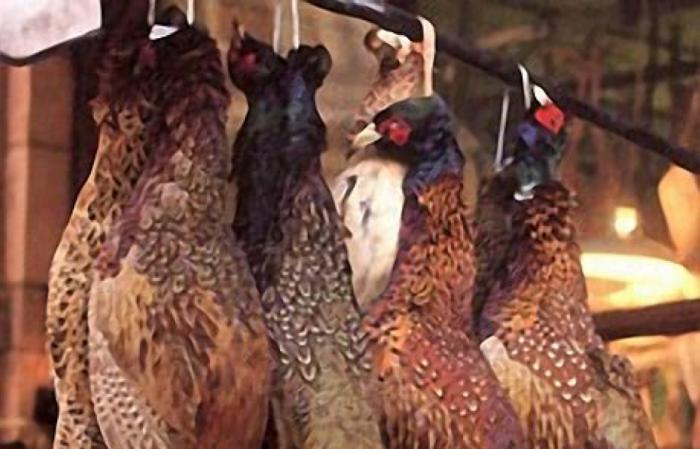


Q: Can you please suggest a supplier of skins/casings for my home-made sausages?
We have found a company called Spicetech UK, who supply skins and casings by mail order. You can contact them at 15 Buxton Road, Disley, Cheshire SK12 2DZ; tel: 01663 766900; e-mail: products@spicetech.co.uk
Q: The Chicken Paprika recipe on the website is slightly different from one I saw and used from Delia's cookbook while living in England last year. I looked up the recipe because I wanted to make it again.
The recipe for Chicken Paprika that you are referring to is in Delia's Complete Cookery Course cookbook
Q: Is there a formula for calculating the cooking time for roasting two of something (eg 2 chickens)? I have tried using the time for one but everything comes out underdone.
There is no real formula for this apart from judgement and keeping a close eye on it. It also depends if you have a fan oven or not because the air is obviously circulating more so will evenly cook the meat wherever it is positioned, unlike a conventional oven. Generally we would recommend that you follow the same temperature for two chickens as you would one, but maybe extend the time by 1½ times, but check to see if they are cooked.

Q: Why do your duck recipes tend to call for Gressingham duck?
The Gressingham brand of duck is a hybrid and specially developed with a long body to produce a maximum yield of meat with less fat. As a result, it is considerably meatier than its available cousins.
Q: With so many safety concerns about cooking chicken, I was wondering how to tell when it's properly cooked?
There are three tests I use:1 Pierce the thickest part of the thigh with a thin skewer – the juices running out should be golden and clear, not pink.2 If the juices are golden and clear, then gently tug the leg away from the body – if it 'gives', then the chicken is ready.3 If the chicken is not stuffed, tip it up and look at the juices running from the body cavity – as before, they should be golden and clear. The first two tests can also be used for checking turkey.
Q: Should you season meat before or after cooking – I've heard that it can make meat dry?
Never season meat before grilling, frying or browning, as salt draws out the precious juices you're trying to keep in (but do remember to season before serving).
![[object Object]](https://www.deliaonline.com/sites/default/files/quick_media/cooks-questions-1.jpg)
Q: Where exactly in Suffolk can I buy Suffolk sweet-cured ham?
We suggest you contact one of the following Suffolk ham mail-order outlets:
Emmetts Stores,
Peasenhall,
Saxmundham,
Suffolk
1P17 2HJ
01728 660250
www.emmettsham.co.uk
F E Neave & Sons,
20 Cross Green,
Debenham,
Suffolk
IP14 6RW
01728 860240
Q: How can I liven up the Sunday roast?
When cooking lamb, if you insert little slivers of garlic and rosemary leaves into the flesh, this imparts a lovely flavour and fragrance while roasting. You can insert garlic and rosemary into a pork joint too.
Q: I keep seeing the word everywhere, so please tell me, what is pancetta?
Pancetta is Italian cured streaky bacon, smoked or green, which gives a much more intense flavour than bacon. Supermarkets now sell pancetta sliced and also in small cubes. You can buy it in one piece from Italian delis.
Q: My Yorkshire puddings never look as good as the ones I buy from the supermarket. How can I catch up?
Commercially made Yorkshire puddings are made in huge special ovens and all come out looking identical. The shape does not really matter, what counts is the lightness and texture. Anything that is home-made would be far superior to the freezer variety. The secret is to have the fat really hot and to use a solid tin of the right size. A roasting tin is much better than small individual tins.
Q: Whenever we have roast duck there's always a lot of fat left. Is there a use for it?
The fat left over after roasting duck is excellent for cooking so hang on to it. It is especially good for roasting potatoes. Try my Oven-roasted potatoes with Garlic and Rosemary and just substitute the olive oil with duck fat.
![[object Object]](https://www.deliaonline.com/sites/default/files/quick_media/cooks-questions-2.jpg)
Q: What's the secret to crunchy crackling on pork and crispy skin on duck?
If you like the skin on roast duck or pork to be really crisp, it must be perfectly dry before going into the oven. Remove the plastic wrapping as soon as you get it home, dry the duck or pork joint thoroughly with kitchen paper and leave it in the fridge without covering, preferably for a day or so before you want to cook it, then rub salt into the skin before putting it into the oven. Loin of pork provides maximum crackling, but ask the butcher to chine it for you – that is, loosen the bone yet leaving it attached.
Q: What do you think is the best method of glazing roasted ham or gammon?
This is the best and probably the simplest way of glazing meat I've come across: spread a thin layer of English mustard and then dip it in demerara sugar. Once this coating hits the heat, it gives a lovely shiny barbecue-flavoured crust.
Q: When serving boiled bacon cold, I tend to find it can be a bit dry. Any suggestions?
If you want to eat a joint of boiled gammon or bacon cold, it is a good idea to give it 15 minutes less cooking time, then leave it to cool in the cooking water, which will keep it extra moist.
Q: There have been several warnings recently, so is it safe to put stuffing inside a bird when roasting?
It has long been the custom to stuff the body and rear cavity of fowl, and with larger fowl it is not uncommon to use two different stuffing mixtures in each end. The hazard of food poisoning is not in the carcass and tissue itself – but in the contents of the gut, which nowadays are removed in a manner that does not result in contamination of the carcass. To avoid risk always include the weight of the stuffing with the bird when you calculate the cooking time and oven temperature.
![[object Object]](https://www.deliaonline.com/sites/default/files/quick_media/cooks-questions-3.jpg)
Q: I'm a working mother and always short of time. Can I cook my turkey in advance and then re-heat it on Christmas Day to save time?
Re-heated turkey will never be as good as a turkey that is freshly cooked. There is an excellent plan on the website for preparing your Christmas dinner. Otherwise, you can slice the turkey and add a few drops of lightly salted water sprinkled over the meat before re-heating it, which is something that many hotels do. However, I do advise a freshly cooked turkey if possible, especially as re-heating poultry can be hazardous to health.
Q: Is the method for obtaining the best crackling on gammon different to that used on roast pork?
Gammon is now much easier to cook than it used to be. Modern curing methods have eliminated the need for pre-soaking. Remove the wrapping and dry the skin with kitchen paper. For really good crackling, score the skin in a criss-cross pattern making little 1 cm (½ inch) diamonds and place uncovered in the fridge to continue drying. For really superb crackling, try painting with black treacle first.
Q: What is the secret to getting a crunchy outside to a roast joint of meat without overcooking the inside?
Part of the answer is roasting at the right temperature: a short time in a really hot oven will give you a crisp exterior with plenty of juice left inside (please remember to rest the joint properly after cooking or the texture may seem a little tough). One way to make the surface fat of a joint extra crisp, is to lightly coat it with flour. For beef you can add a little dry mustard powder to the flour.
Q: When I'm stewing cuts of meat I find that there can be too much fat in the liquid. Should I trim off all the fat from the meat before I start?
No, some fat left on meat for stewing and braising improves the texture and taste. But if there is too much fat in the resulting stew, the trick is to remove the meat when the dish is cooked so that any excess fat in the liquid can be skimmed off with a spoon and finally soaked up by lightly placing folded wodges of absorbent kitchen paper on the surface.
![[object Object]](https://www.deliaonline.com/sites/default/files/quick_media/cooks-questions-4.jpg)
Q: I find your 'How To…' section really helpful. Can you tell/show me how to bone a chicken? I always end up making a complete mess!
As you may know, there is a 'How To' for jointing chickens and one for carving chickens, but none for boning them. We have spoken to Delia about this and her views are as follows:
"I'm afraid this is something that goes against the grain with me. I was brought up to believe that bones in the meat during cooking enhance flavour (you can test this yourself: eat that little piece of chicken that adheres to the wing bone, and you can really taste the concentrated chicken). Boning a chicken may indeed make it easier to carve – but what about the trouble of boning it in the first place! I can't help thinking that sheer theatrical effect is the reason for some people producing something resembling a stuffed rugby ball in the name of chicken."
We can, however, recommend Leith's Cookery Bible, which has detailed instructions for boning chickens.
Q: I have an electric fan oven but I cannot get proper crackling on my roast pork. Also I cannot get my Yorkshire puddings to rise. I have heard that full-fat milk may help. What am I doing wrong?
In order to get really crisp crackling on pork, the oven must be really hot (gas mark 8, 450°F, 230°C) and the skin of the pork must be really dry. Ask your butcher to score the skin (this needs a very sharp knife) and then rub in Maldon sea salt. For a 5 lb (2.25 kg) joint, roast at the high temperature for 25 minutes then lower the temperature to gas mark 5, 375°F (190°C) and allow 35 minutes per lb (450 g). Don't baste the pork. Allow to relax for 20-30 minutes before carving.Another way to achieve crispy crackling is to remove the fat and skin from the pork and roast it separately. See the Loin of Pork Dijonnaise recipe below which explains how to do this.You will be pleased to hear that Delia covers the making of Yorkshire Puddings in great detail on the site!
Follow us Like us on Facebook Follow us on twitter Follow us on instagram Follow us on pinterest Follow us on youtube
© 2001-2024 All Rights Reserved Delia Online